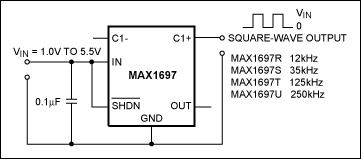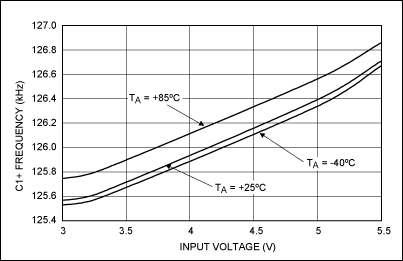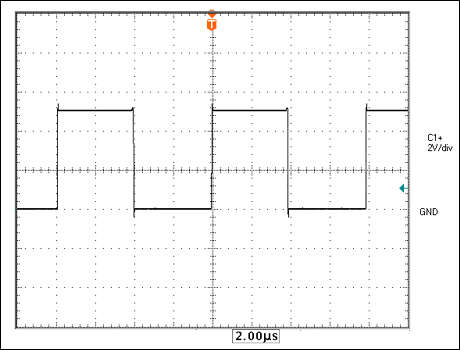Square-wave Oscillator Includes No External Components
要約
Digital systems that are not very demanding about their clock frequency, like multiplexed panel indicators and display sequencers, often require a square-wave (clock) generator for driving digital or AC-powered subsystems. Some sensors also require the use of an AC drive. This application note presents a square-wave oscillator that requires no external components except the bypass capacitor. This circuit generates a square-wave that is useful as a clock signal or AC drive for the excitation of sensors.
This design idea appeared in the March 10, 2006 issue of EE Times.
Systems often require a square-wave (clock) generator for driving digital or AC-powered subsystems. These same systems may not be very restrictive about the frequency of the signal. Such frequency-tolerant digital systems include multiplexed panel indicators and display sequencers.
Some sensors also require the use of an AC drive. Electro-chemical sensors (e.g., for monitoring tilt, conductivity, and moisture) cannot tolerate DC current, because it degrades the materials of which they are made. Capacitive sensors operate on a principle that calls for AC drive. With piezoresistive sensors, an AC drive cancels DC errors and low-frequency noise. Fluxgate sensors also need an AC drive.
The circuit of Figure 1 requires no external components except the bypass capacitor. This circuit generates a square wave that is useful as a clock signal or as an AC drive for the excitation of sensors. The design produces a powerful 3V to 5V square-wave output with very low source impedance (less than 10Ω). It also provides rail-to-rail excursions in a small SOT23 package. The output frequency is reasonably stable with variations in supply voltage and temperature (Figure 2).

Figure 1. Formed from a single MAX1697 (an inverting charge pump), this circuit produces a square wave that is useful in many applications.

Figure 2. Frequency vs. input voltage for the MAX1697T. Output frequency for the Figure 1 circuit varies only ~1% over the allowable extremes of temperature and supply voltage.
The IC shown is an inverting charge pump, the MAX1697, which was originally designed to supply a negative voltage in positive single-supply systems. Its rail-to-rail capability means that the output-amplitude precision depends directly on the level of VIN. Duty-cycle error is a fraction of 1%.
The circuit has a dependable start response, even with supply voltages below 1V (depending on the MAX1697 version used). Note that the tradeoff for simplicity in this circuit is a lack of flexibility in output frequency. As shown in Figure 1, four nominal frequencies are available according to the IC version chosen (i.e., 12kHz, 35kHz, 125kHz, and 250kHz). Figure 3 is a scope shot of the output waveform.

Figure 3. Output waveform for the Figure 1 circuit. Data were gathered on a MAX1697T; VIN = 5V.